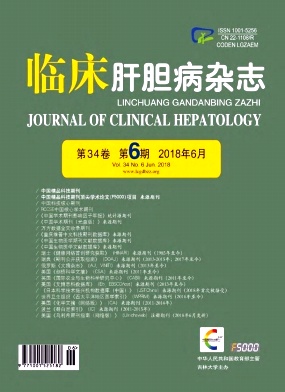|
[1]BRITO-ZERON P, RAMOS-CASALS M, BOSCH X, et al.The clinical spectrum of Ig G4-related disease[J].Autoimmun Rev, 2014, 13 (12) :1203-1210.
|
|
[2]CULVER EL, CHAPMAN RW.Ig G4-related hepatobiliary disease:an overview[J].Nat Rev Gastroenterol Hepatol, 2016, 13 (10) :601-612.
|
|
[3]OHARA H, OKAZAKI K, TSUBOUCHI H, et al.Clinical diagnostic criteria of Ig G4-related sclerosing cholangitis 2012[J].J Hepatobiliary Pancreat Sci, 2012, 19 (5) :536-542.
|
|
[4]NAKAZAWA T, NAITOH I, OHARA T, et al.Diagnostic criteria for Ig G4-related sclerosing cholangitis based on cholangiographic classification[J].J Gastroenterol, 2012, 47 (1) :79-87.
|
|
[5]KAMISAWA T, FUNATA, HAYASHI Y, et al.Lymphoplasmacytic sclerosing pancreatitis is a pancreatic lesion of Ig G4-related systemic[J].Am J Surg Pathol, 2004, 28 (8) :1114.
|
|
[6]MARTINEZ-VALLE F, FEMANDEZ-CODINA A, PINAL-FEMANDEZ L, et al.Ig G4-related disease:Evidence from six recent cohorts[J].Autoimmun Rev, 2017, 16 (2) :168-172.
|
|
[7]BJOENSSON E, CHARI ST, SMYRK TC, et al.Immunoglobulin G4 associated cholangitis:Description of an emerging clinical entity based on review of the literature[J].Hepatology, 2007, 45 (6) :1547-1554.
|
|
[8]NAKAZAWA T, IKEDA Y, KAWAGUCHI Y, et al.Isolated intrapancreatic Ig G4-related sclerosing cholangitis[J].World J Gastroenterol, 2015, 21 (4) :1334-1343.
|
|
[9]ATSUSHI K, ICHIRO T, ISAO N, et al.Nationwide epidemiological survey of autoimmune[J].Pancreas, 2015, 44 (4) :535-539.
|
|
[10]INOUE D, YOSHIDA K, YONEDA N, et al.Ig G4-related disease:dataset of 235 consecutive patients[J].Medicine (Baltimore) , 2015, 94 (15) :e680.
|
|
[11]ZEN Y, KAWAKAMI H, KIM JH, et al.Ig G4-related sclerosing cholangitis:all we need to know[J].J Gastroenterol, 2016, 51 (4) :295-312.
|
|
[12]ZEN Y, FUJII T, HARADA K, et al.Th2 and regulatory immune reactions are increased in immunoglobin G4-related sclerosing pancreatitis and cholangitis[J].Hepatology, 2007, 45 (6) :1538-1546.
|
|
[13]MIYOSHI H, UCHIDA K, TANIGUCHI T, et al.Circulating na6ve and CD4+CD25high regulatory T cells in patients with autoimmune pancreatitis[J].Pancreas, 2008, 36 (2) :133-140.
|
|
[14]CARRUTHERS MN, KHOSROSHAHI A, AUGUSTIN T, et al.The diagnostic utility of serum Ig G4 concentrations in Ig G4-related disease[J].Ann Rheum Dis, 2015, 74 (1) :14-18.
|
|
[15]BOONSTRA K, CULVER EL, POEN AC, et al.Serum immunoglobulin G4 and immunoglobulin G1 for distinguishing immunoglobulin G4-associated cholangitis from primary sclerosing cholangitis[J].Hepatology, 2014, 59 (5) :1954-1963.
|
|
[16]CULVER EL, SADLER R, SIMPSON D, et al.Elevated serum Ig G4 levels in diagnosis, treatment response, organ involvement, and relapse in a prospective Ig G4-related disease UK cohort[J].Am J Gastroenterol, 2016, 111 (5) :733-743.
|
|
[17]GHAZALE A, CHARI ST, ZHANG L, et al.Immunoglobulin G4-associated cholangitis:clinical profile and response to therapy[J].Gastroenterology, 2008, 134 (3) :706-715.
|
|
[18]MASAMUNE A, NISHIMORI I, KIKUTA K, et al.Randomised controlled trial of long-term maintenance corticosteroid therapy in patients with autoimmune pancreatitis[J].Gut, 2017, 66 (3) :487-494.
|
|
[19]YOU MW, KIM JH, BYUN JH, et al.Relapse of Ig G4-related sclerosing cholangitis after steroid therapy:Image findings and risk factors[J].Eur Radiol, 2014, 24 (5) :1039-1048.
|
|
[20]CARRUTHERS MN, TOPAZIAN MD, KHOSROSHAHI A, et al.Rituximab for Ig G4-related disease:A prospective, open-label trial[J].Ann Rheum Dis, 2015, 74 (6) :1171-1177.
|
|
[21]KHOSROSHAHI A, BLOCH DB, DESHPANDE V, et al.Rituximab therapy leads to rapid decline of serum Ig G4 levels and prompt clinical improvement in Ig G4-related systemic disease[J].Arthritis Rheum, 2010, 62 (6) :1755-1762.
|
|
[22]KHOSROSHAHI A, CARRUTHERS MN, DESHPANDE V, et al.Rituximab for the treatment of Ig G4-related disease:Lessons from10 consecutive patients[J].Medicine (Baltimore) , 2012, 91 (1) :57-66.
|
|
[23]MURAKAMI J, MATSUI S, ISHIZAWA S, et al.Recurrence of Ig G4-related disease following treatment with rituximab[J].Mod Rheumatol, 2013, 23 (6) :1226-1230.
|







 DownLoad:
DownLoad: